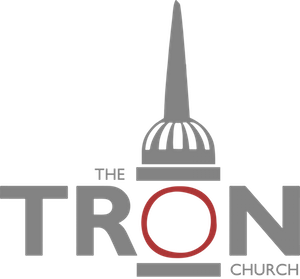Then he brought me to the nave and measured the jambs. On each side six cubits was the breadth of the jambs. 2 And the breadth of the entrance was ten cubits, and the side walls of the entrance were five cubits on either side. And he measured the length of the nave, forty cubits, and its breadth, twenty cubits. 3 Then he went into the inner room and measured the jambs of the entrance, two cubits; and the entrance, six cubits; and the side walls on either side of the entrance, seven cubits. 4 And he measured the length of the room, twenty cubits, and its breadth, twenty cubits, across the nave. And he said to me, “This is the Most Holy Place.”
5 Then he measured the wall of the temple, six cubits thick, and the breadth of the side chambers, four cubits, all round the temple. 6 And the side chambers were in three storeys, one over another, thirty in each storey. There were offsets all round the wall of the temple to serve as supports for the side chambers, so that they should not be supported by the wall of the temple. 7 And it became broader as it wound upwards to the side chambers, because the temple was enclosed upwards all round the temple. Thus the temple had a broad area upwards, and so one went up from the lowest storey to the top storey through the middle storey. 8 I saw also that the temple had a raised platform all round; the foundations of the side chambers measured a full reed of six long cubits. 9 The thickness of the outer wall of the side chambers was five cubits. The free space between the side chambers of the temple and the 10 other chambers was a breadth of twenty cubits all round the temple on every side. 11 And the doors of the side chambers opened on the free space, one door towards the north, and another door towards the south. And the breadth of the free space was five cubits all round.
12 The building that was facing the separate yard on the west side was seventy cubits broad, and the wall of the building was five cubits thick all round, and its length ninety cubits.
13 Then he measured the temple, a hundred cubits long; and the yard and the building with its walls, a hundred cubits long; 14 also the breadth of the east front of the temple and the yard, a hundred cubits.
15 Then he measured the length of the building facing the yard that was at the back and its galleries on either side, a hundred cubits.
The inside of the nave and the vestibules of the court, 16 the thresholds and the narrow windows and the galleries all round the three of them, opposite the threshold, were panelled with wood all round, from the floor up to the windows (now the windows were covered), 17 to the space above the door, even to the inner room, and on the outside. And on all the walls all round, inside and outside, was a measured pattern. 18 It was carved of cherubim and palm trees, a palm tree between cherub and cherub. Every cherub had two faces: 19 a human face towards the palm tree on one side, and the face of a young lion towards the palm tree on the other side. They were carved on the whole temple all round. 20 From the floor to above the door, cherubim and palm trees were carved; similarly the wall of the nave.
21 The doorposts of the nave were squared, and in front of the Holy Place was something resembling 22 an altar of wood, three cubits high, two cubits long, and two cubits broad. Its corners, its base, and its walls were of wood. He said to me, “This is the table that is before the Lord.” 23 The nave and the Holy Place had each a double door. 24 The double doors had two leaves apiece, two swinging leaves for each door. 25 And on the doors of the nave were carved cherubim and palm trees, such as were carved on the walls. And there was a canopy of wood in front of the vestibule outside. 26 And there were narrow windows and palm trees on either side, on the side walls of the vestibule, the side chambers of the temple, and the canopies.
Another school of interpretation - the symbolic Christian - holds that the vision of the temple finds its symbolic fulfilment in the Christian church. There is, of course, truth in this as there is in fact in the literal prophetic interpretation, since in regard to the latter, Ezekiel was commanded to bring these things before the people and therefore provided a pattern for the exiles, though there were symbolic overtones in it. In the same way, there is truth also in the idea that the temple vision finds its fulfilment symbolically in the Christian Church. One has only to think of how deeply the Apostle John borrowed from this vision in his description of the new Jerusalem in Revelation to realise that this is so. But this cannot be the whole truth either for the very obvious reason that Ezekiel was ministering to the exiles in Babylon, and was speaking a word to them, and a vision about the Christian Church in the consummation of the end-time could have had little to say directly in their particular situation. It follows basic principles of interpretation to say that when the Lord gave a word to a prophet to speak to the people, that word should have something to say to them relevant to their situation - this is always the primary meaning of prophecy. Thus, the symbolic Christian interpretation, although containing real truth, is not fully satisfactory either.
